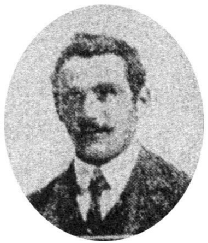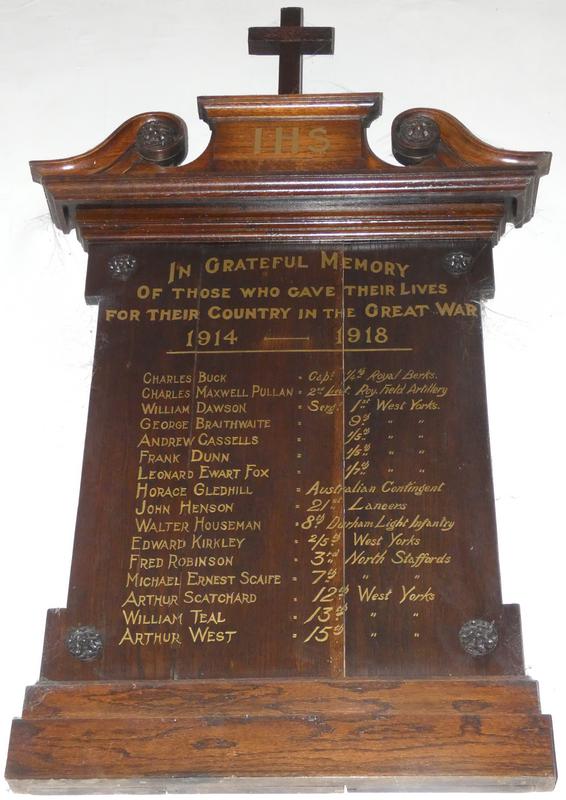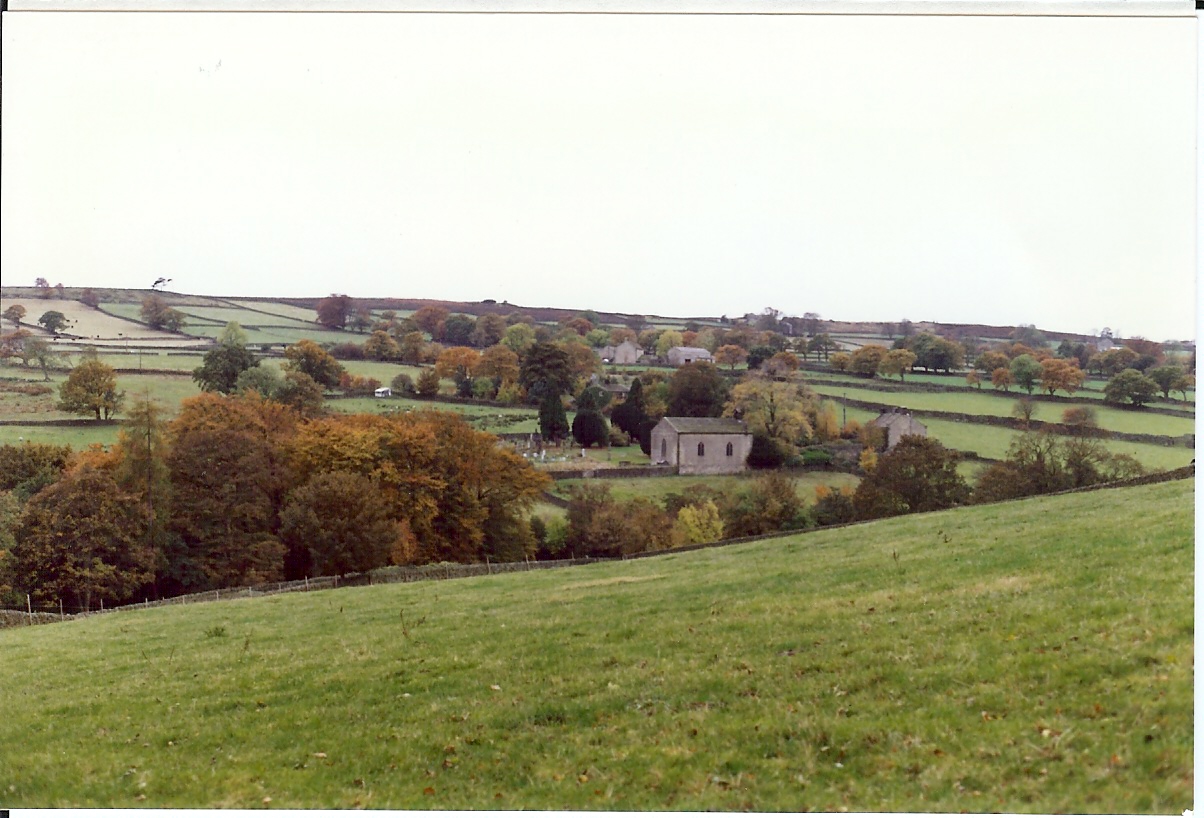
Identification Patch
50th Northumbrian Division WW1
301883 Private Walter Houseman KIA
28364 Kings Royal Rifle Corps
48668 91st Training Reserve Battalion
6262 18th Battalion,
Durham Light Infantry
301883 1st/8th Battalion,
Durham Light Infantry
151st Brigade,
50th Northumbrian Division
1914-1918

Durham Light Infantry Badge
This file last updated 24 November, 2023 13:09
Introduction

Walter Houseman
[Image courtesy of C Gary Houseman]

Memorial Board Dacre Banks
Walter Houseman (22 Sep 1888-12 Apr 1918) was the eldest child of George Houseman and Emma Chambers of West Yorkshire UK.
Employed as a farmer at Deering House Farm at the time of his enlistment, he was unmarried and gave his mother, Emma Houseman as his next of kin.
He enlisted at Harrogate for entry into military service on 9 Dec 1915, but was not called up until mobilised on 15 Jun 1916 and posted to the Kings Royal Rifle Corps as Rifleman No 28364. On 1 Sep 1916 he was transferred to the 91st Training Reserve Battalion as number 49668.
He landed in France on 15 Nov 1916 and was posted to the 18th Battalion Durham Light Infantry as number 6262 and on the 19th of November, before he had time to memorise his latest Regimental Number, was transferred as Private, number 301883 to the 1st/8th Battalion, 151st Brigade of the 50th Northumbrian Division.
The Battalion relieved a Portuguese unit at Neuf Berquin on the night of 8/9 Apr 1918 and was in action almost immediately. The 50th Division was outnumbered almost 4 to 1 by the Germans and was virtually destroyed after four days of fighting.
Walter was killed in action (KIA) on 12 April 1918 and at the end of the war he was awarded the British War Medal 1914-18 and the Victory Medal.
His body was unable to be recovered and he is memorialised on Panel 8 and 9 of the Ploegsteert Memorial in Flanders as well as well as the little church behind Dacre. Both the plaque and the church are shown below.
This Certificate records details of his Memorial. His name also appears on the Book of Remembrance in the Durham Cathedral and from his entry there we learn that he was born in Brearton Yorkshire, enlisted at Harrowgate (Dacre, Yorkshire), that he was killed in action in France and Flanders on 12 Apr 1918 and was formerly R28364 in the Kings Royal Rifle Corps.
On 13 Apr 1918 the Division was relieved in place by the 5th Division. The Brigades of the 50th were reorganised as Battalions and the 1st/8th Battalion was reorganised as a Company - which will give an idea of the casualties. The history of the Durham Light Infantry records that the unit was 'reduced to cadre strength 15 Jun 1918'.
See Walter's full military history at C. Gary Houseman's Houseman Family site or his Medal Card which is the right-hand in the centre of the 6 card sheet.


This record prepared by Clive Mitchell-Taylor, grand-nephew of Walter Houseman, based upon records obtained by C. Gary Houseman and on his site. The layout has been altered from the original to accord with the records on this site. Photographs of the Plaque and Chapel by Clive Mitchell-Taylor
Relatives who Served
Walter's younger brother George Houseman also served in WW1. He survived but was WIA.
Brother-in-law Stephen Downes served in the AIF and married Walter's sister Rosa Houseman in Stockton NSW in 1919. He was WIA in 1917 and repatriated to Australia.
Brother-in-law Joseph Downes served with the 2nd/5th Battalion, Prince of Wales' Own, West Yorkshire Regiment.
Brother-in-law Thomas Downes served with the 2nd/6th Duke of Wellington's West Riding Regiment and was WIA, DOW.
Brother-in-law Thomas Edward Inman, husband of Ada Downes was with the 1st Battalion, Prince of Wales' Own, West Yorkshire Regiment and was KIA.

